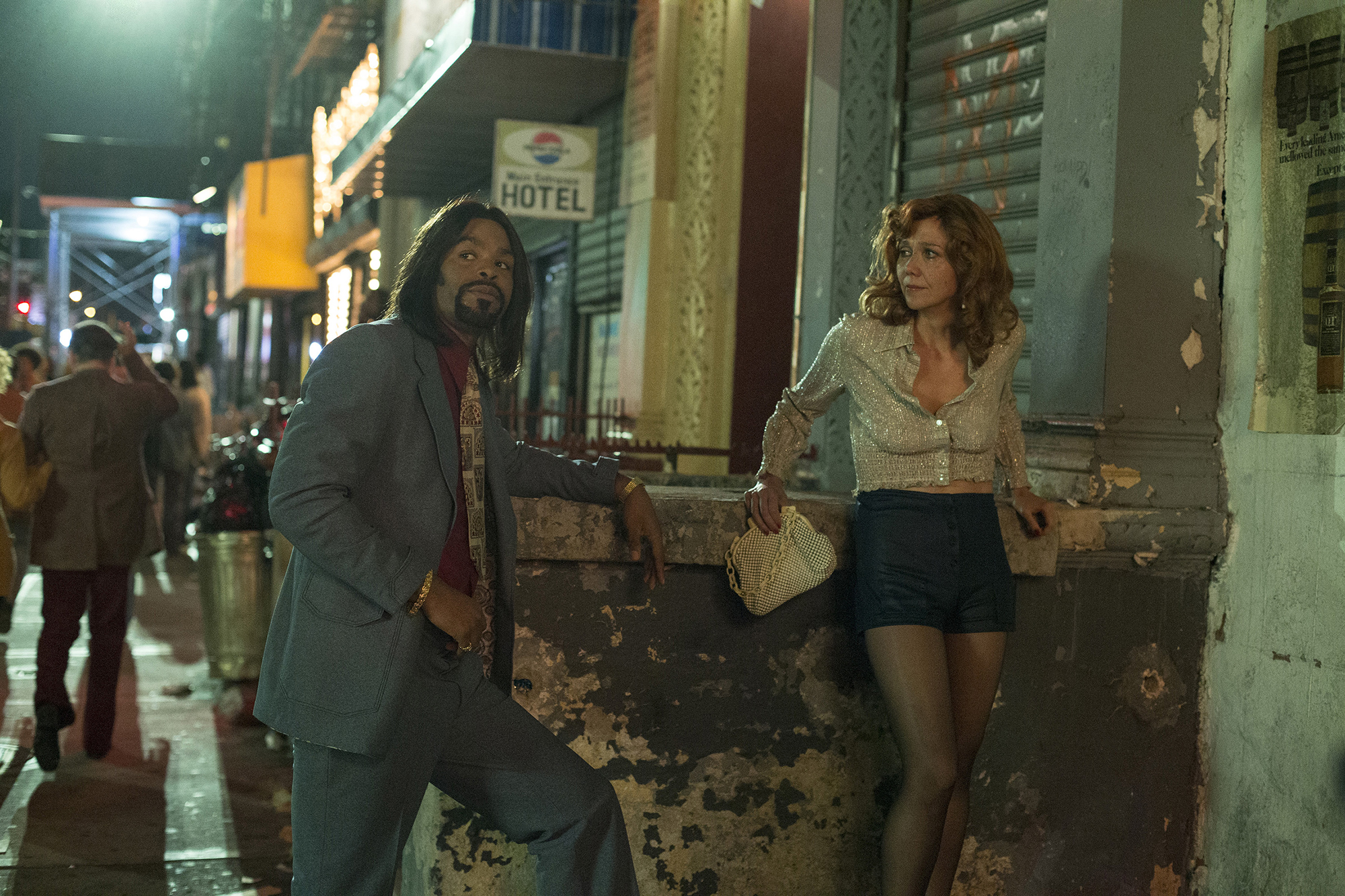So what do you all think of the HBO’s drama series The Deuce, set in Times Square in the early 1970s? Sexually explicit but literate, with a modern viewpoint that gives rich, nuanced characterizations to women, The Deuce performs a unique negotiation between romanticizing the 42nd Street sex trade and condemning it. Whether or not you connect with the narrative — not every beat hits; in the continuum of David Simon projects, this is more Treme and less The Wire — you can’t deny its excellent achievements in production and tone. And Maggie Gyllenhaal, in particular, gives one of the year’s best performances. (Props also to Gbenga Akinnagbe, bringing a harsh richness to his role of the pimp Larry Brown.)
We devoted an entire show a few weeks ago to this era as a tie-in to the series. Give it a listen if you haven’t already! We’re proud of that show. Some true ‘forgotten history’ needless to say.
The final episode broadcasts this Sunday. For the past few Sundays, I’ve been Tweeting along with the show, throwing out little facts and trivia of things that get referenced in the show. No plot spoilers though! The Tweets have mostly to do with historical context and production details.
Here are a handful of Tweets from prior episodes. Check in with @boweryboys this Sunday to see additional 1970s trivia relating to the show.
Port Authority Bus Terminal opened in 1950 but was insanely overcrowded by 1960s and known as most dangerous place in NY. #TheDeuce pic.twitter.com/phPi0vsQJP
— The Bowery Boys NYC (@BoweryBoys) September 11, 2017
The films depicted on 42nd Street ALL played there, mix of sleaze, foreign, B-movie. This is grindhouse. https://t.co/GxLJcC94Px #TheDeuce pic.twitter.com/pWSrwEpKve
— The Bowery Boys NYC (@BoweryBoys) September 11, 2017
Before rise of Koreatown (pictured), Korean food WAS a rare cuisine in 1971. First NYC Korean restaurant was 1960 named Mi Cin. #TheDeuce pic.twitter.com/yafLRjcRTa
— The Bowery Boys NYC (@BoweryBoys) September 11, 2017
The porn peep booth debuted on 42nd St (on spot of today’s Chevy’s), invention of sleaze lord Marty Hodas. https://t.co/GxLJcC94Px #TheDeuce pic.twitter.com/eONxufqnlP
— The Bowery Boys NYC (@BoweryBoys) September 18, 2017
Who couldn’t use a good Orange Julius drink? There were several OJ joints in NYC then including one on West 42nd and 48th Streets. #TheDeuce pic.twitter.com/ltNU4OuBRL
— The Bowery Boys NYC (@BoweryBoys) September 18, 2017
The theaters of 42nd Street frequently played ‘foreign films’ although it was hardly the destination for Ingmar Bergman lovers. #TheDeuce pic.twitter.com/i6K3ip86tD
— The Bowery Boys NYC (@BoweryBoys) September 25, 2017
A gay bar on Smith Street in ‘South Brooklyn’? The neighborhood names Boerum Hill and Cobble Hill were not yet in common usage. #TheDeuce pic.twitter.com/0EyPxdTlHy
— The Bowery Boys NYC (@BoweryBoys) October 2, 2017
In 1967, NYC eliminated license requirements for massage parlors; thus many opened as houses of prostitution. #TheDeuce pic.twitter.com/gEfXHDvYRL
— The Bowery Boys NYC (@BoweryBoys) October 9, 2017
The classic Anthora Greek coffee cup made its debut in 1963, a staple of NYC’s numerous Greek-owned diners. #TheDeuce pic.twitter.com/9PRi88YjoC
— The Bowery Boys NYC (@BoweryBoys) October 9, 2017
Sylvia Woods opened Sylvia’s Restaurant in 1962, a renown eatery that would help define Harlem in late 20th century. #TheDeuce pic.twitter.com/ZvVNHSKGrg
— The Bowery Boys NYC (@BoweryBoys) October 16, 2017
Benjamin Ward began working for the NYPD in 1951. He would become (in 1984) NY’s first African-American police commissioner. #TheDeuce pic.twitter.com/Lvmk1wwvit
— The Bowery Boys NYC (@BoweryBoys) October 23, 2017

